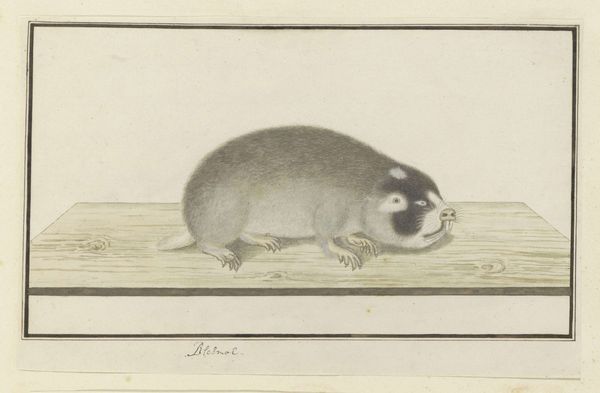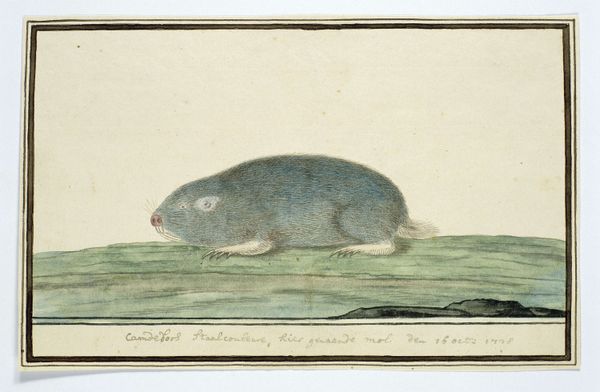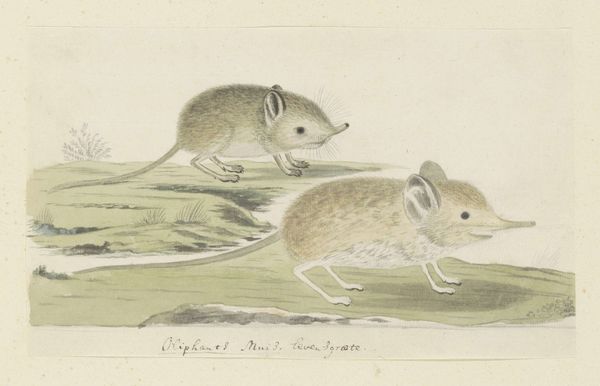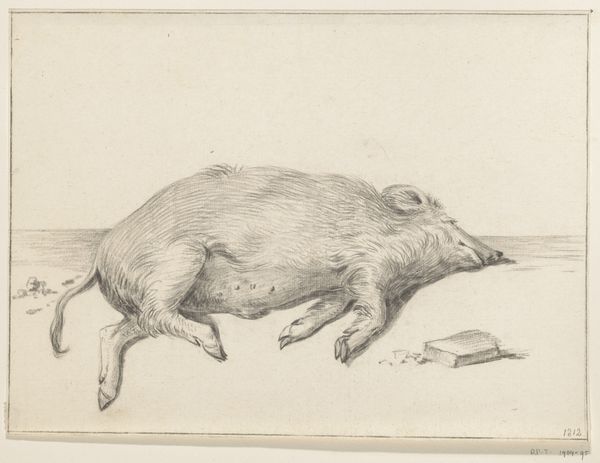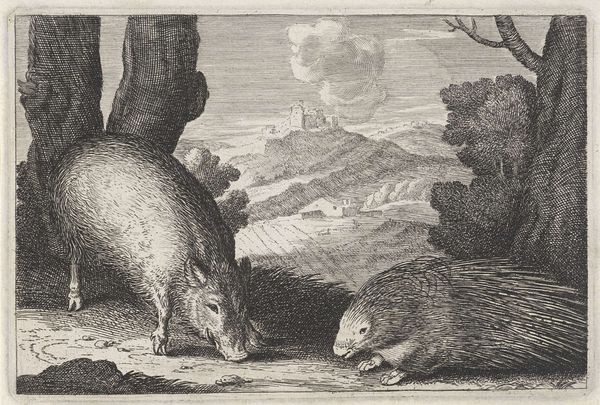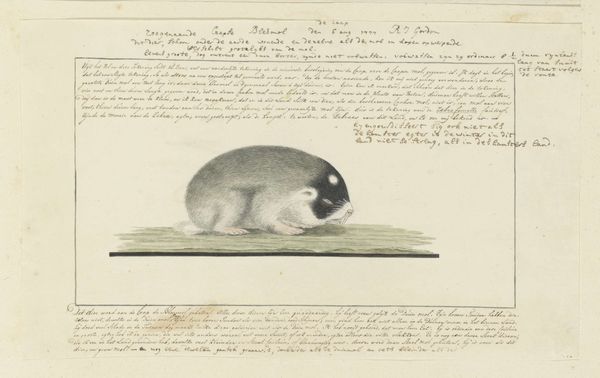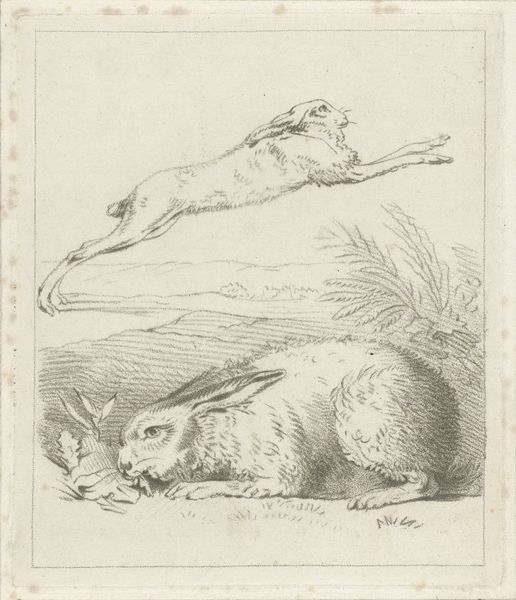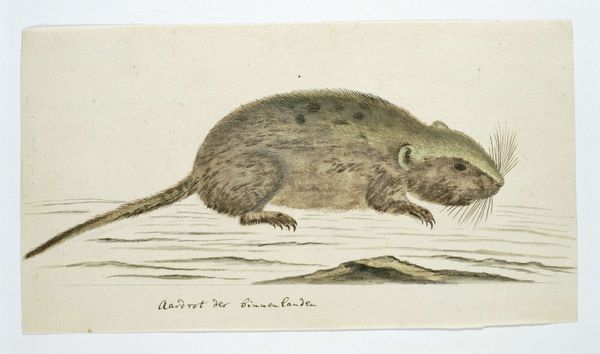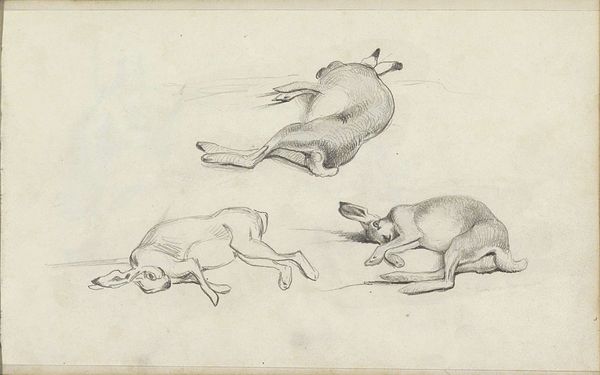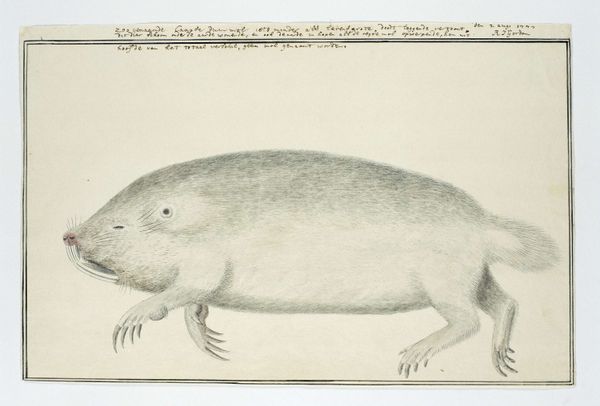
#
pencil drawn
#
aged paper
#
toned paper
#
light pencil work
#
pencil sketch
#
personal sketchbook
#
coloured pencil
#
pencil work
#
watercolour illustration
#
watercolor
Dimensions: height 660 mm, width 480 mm, height 233 mm, width 344 mm, height 201 mm, width 326 mm
Copyright: Rijks Museum: Open Domain
Curator: At first glance, they seem like furry potatoes with tiny hands. Editor: Look closer. What you're seeing is Robert Jacob Gordon’s rendering, circa 1777-1779, titled "Chrysochloris asiatica (Cape golden mole)." It is made of watercolour and pencil on paper. Curator: The poses are just fascinating. The golden mole centered seems to be confidently displaying its profile while the other two strike more timid or even defensive poses. Is this Gordon representing hierarchy? Editor: Perhaps. Gordon was a complex figure, a military man in the service of the Dutch East India Company, who, nonetheless, showed great interest in the indigenous peoples and natural life of the Cape. One could read this image through the lens of colonial taxonomy and power. Who gets to see, who gets to name, and to what end? The act of rendering, of scientifically documenting a creature, certainly had political implications. Curator: Absolutely. And in light of the animal's name, how does this golden shimmer complicate our perception of wealth, land, and who profits off both? Are these 'portraits' commenting on ecological concerns, early industrial capitalism, even imperialism? Editor: The colour is undeniably striking. Even captured with humble watercolour and pencil, the implied iridescence feels special. One could examine this creature as a potent symbol of hidden wealth, reflecting cultural attitudes towards both the natural world and its resources. Its small size emphasizes a sense of preciousness. Curator: Do you think it's reaching too far to suggest the poses hint at social performances enacted because of interactions with colonizers? Maybe some are braver for the encounter while others have succumbed to submissive roles, thus creating commentary on imposed social roles and expectations during that period? Editor: I think it's fair to suggest Gordon's illustrations invite conversations on colonialism’s impact and lasting impression on nature and identity. The illustration acts as a portal into a nuanced exploration. Curator: Ultimately, it is up to us now to recognize, challenge, and reconcile history with sensitivity, empathy, and an ever present critical lens. Editor: I agree, considering what these symbols truly mean allows a deeper more personal connection to this period piece. Thank you for that context.
Comments
No comments
Be the first to comment and join the conversation on the ultimate creative platform.

